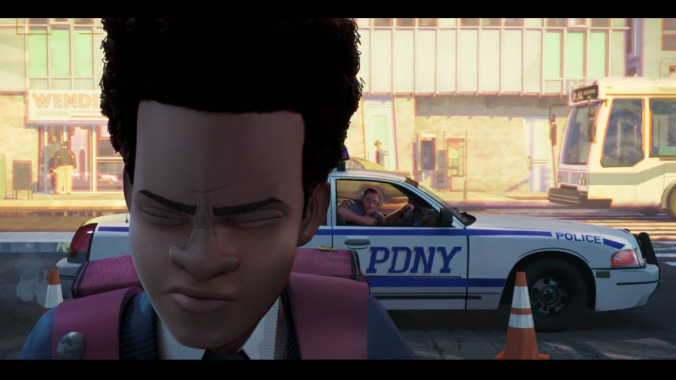All the answers are interesting—the dressage sequence from BoJack Horseman, Rick being depressed on Rick And Morty, animating water in general—but the most fascinating and impressive answer comes from Imageworks production designer Justin K. Thompson, who worked on Spider-Man: Into The Spider-Verse. Vulture gives his answer the sub-heading “The Ben-Day Dots,” but a more accurate summation would probably be “all of it”:
My process for Spider-Verse began with first imagining what the world would look like from the point of view of a character that lived inside of a comic book. I imagined that when Miles Morales looked around, he would see all the details of comic-book illustration — things like screen tones, hatching, flat color, linework, printing offsets, graphic shadows, and Ben-Day dots everywhere in the space that surrounds him. As I worked through it, I began to realize that as far as Miles can see, the world he lives in looks like a dimensional illustration…
To bring Miles’s world to the screen, I needed to do the opposite: Philosophically, I imagined the 2-D illustrations in the comics as the artist’s interpretation of a 3-dimensional world that they had visited. To accomplish that, I determined that since the computer basically creates a simulation of reality, all we needed to do was change the rules of the simulation. We needed to simulate a new reality. It sounded so simple, in my head, but the tools didn’t exist to do it and I realized Imageworks would have to invent them.
Those are but two paragraphs from a long, kind of mind-boggling answer. We already loved Into The Spider-Verse, but now we can appreciate its beauty more fully, and that’s pretty cool. All they had to do was invent the tools needed to make it possible for a computer to simulate a new reality, NBD. Bring on the sequel.


 Keep scrolling for more great stories from A.V. Club.
Keep scrolling for more great stories from A.V. Club.